Transportation in Japan
Given its relatively isolated location on the earth, Japan can sometimes be a challenge to get to. However, from the moment you touch down, getting around becomes a breeze.
Japan’s peerless public transportation shuttles you through sprawling cities and quaint villages at break-neck speed and with pinpoint punctuality. From the sleek shinkansen to the humble local train, timetables are followed religiously with a service you can quite literally set your watch by. Local buses and long-distance coaches follow suit and the army of taxis that patrol the streets are spotlessly clean and unreservedly trustworthy. In addition to this unrivaled service, a vast array of discount passes and travel cards are available offering wallet-friendly options to allow you to travel farther and wider with the upmost convenience and ease.
You can also pre-book any of the transportation methods described below by contacting us
Getting Around Tips
Japan Railways (JR)
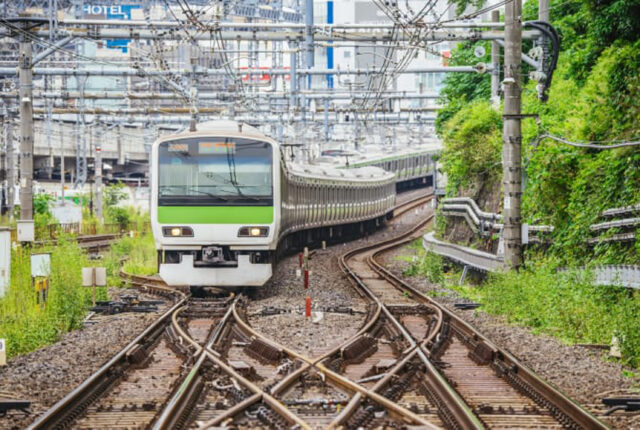
Japan’s leading railway company, Japan Railways (JR), has an elaborate and well-established network of trains throughout the country. From scenic local trains to the super express shinkansen, if you are traveling on rail in Japan, the chances are it will be with JR. A wide variety of unlimited ride passes are available to help reduce the cost of train travel and help you travel farther. Check out the Rail Passes section of this site.
JR Hokkaido ,JR East , JR Central ,JR West , JR Shikoku ,JR Kyushu
Purchasing tickets
Tickets for short distances are available from ticket machines installed at each train station. Tickets for traveling long distances and reservations are dealt with at ticket offices at major stations. These long-distance tickets have a lot of important information printed on them, so for an explanation of your ticket, click here – JNTO: Bilingual Tickets by Japan Railways Group
To use the train, first purchase a ticket at a vending machine or ticket window. Pass your ticket through the automated ticket gate or show your ticket to the inspector. Please keep the ticket as you will need it once you arrive at your destination. If there is no fare chart in English, buy the cheapest ticket indicated on the vending machine and pay the difference into the fare adjustment machine at your destination station before you go through the ticket gate. Most, if not all trains stop operating around midnight.
Booking long-distance trains
To book tickets for long-distance trains, follow either one of two different procedures:
If you did not validate your Japan Rail Pass at the airport, or did not make seat reservations at the Airport JR Travel Service Center, find a different JR Travel Center to validate your pass. The Tokyo Center is located at the Yaesu north-exist concourse of Tokyo Station , and is open 10:00 a.m. – 6:00 p.m. daily. If you have already validated your pass and need only to make seat reservations, go to any Reservation Ticket Office (Midori-no-Madoguchi) counter at major JR stations.
If you don’t have a JR Pass, visit the JR Travel Service Center or one of the major travel agents for ticket purchases.
Train Service Updates & Status
Up-to-the-minute information about current operation status, service disruptions including cancellations and delays on Japan Railways Group.
 Shinkansen (Bullet Train)
Shinkansen (Bullet Train)
Nothing screams “Japan” more loudly, than the super sleek shinkansen silently speeding out of Tokyo station bound for all corners of the country.
The world-renowned bullet train offers you the highest rail speeds to match its peerless comfort. It is operated from Tokyo and speeds off to major cities around the country at regular intervals.
The shinkansen rockets down a number of different routes across Japan. The Tokaido-Sanyo Shinkansen links Tokyo and Hakata . The Tohoku Shinkansen links Tokyo and Shin-Aomori; the Johetsu Shinkansen links Tokyo and Niigata ; the Nagano Shinkansen links Tokyo and Nagano ; and the Kyushu Shinkansen in Kyushu presently links Shinyatsushiro (Kumamoto Prefecture) and Kagoshima Chuo (Kagoshima Prefecture).
Types of Shinkansen
There are three types of Tokaido-Sanyo Shinkansen, namely, Nozomi, Hikari, and Kodama. The Nozomi Shinkansen stops at fewer stations compared to the other two, and is your quickest route to the Kansai region of Kyoto , Osaka , Kobe and beyond. Note that the JR Rail Pass cannot be used on this particular train.
While generally white in color, the designated shinkansen to the Tohoku region come in electric green and a vibrant red. There is also a rare yellow shinkansen—known as Dr. Yellow—that monitors the conditions of the tracks and overhead wires. Keep an eye out, it is a lucky day if you catch a glimpse of the doctor.
Types of seats
There are three types of seats: Non-reserved seats, Reserved seats, and Green Car seats For detailed information on all available routes and fares, click on the following links — JR East , JR West , JR Central , JR Hokkaido , JR Kyushu
Shinkansen Rail Passes
Taking a trip on the shinkansen will almost certainly be one of the highlights of a trip to Japan. The sleek trains snake through the country’s mountainous regions—or sometimes straight through the mountains—to a wide range of destinations. While this service is suitably priced for super quick express train travel in unrivalled comfort, costs can be reduced by purchasing one of a variety of passes. Take a look at the following link for all the regional passes and their respective routes and costs — Japan Rail Pass
Shinkansen Tickets
If you are planning to use the shinkansen to travel throughout Japan, doing some research into how to buy shinkansen tickets (JR East , JR West , JR Central , JR Hokkaido , JR Kyushu ) will make the process smoother.
Train Service Updates & Status
Up-to-the-minute information about current operation status, service disruptions including cancellations and delays on Japan Railways Group.
 Subway in Japan
Subway in Japan
Most major cities have a subway system that’s clean, safe, and a great way to get around.
Major advancements are being made in providing multi-language support on Japan’s subway systems making it much easier to get around. Ticket machines, station names, as well as maps and guides of the subway and the local area are often provided in a number of languages.
In the larger cities such as Tokyo and Osaka , there are often subway stations clustered in similar areas. Changing lines can be expensive, so check the map closely to see which train lines you can access your destination from. For economical travel, research one-day or two-day passes which will almost certainly be on offer. Be aware that as it is the subway, your JR Rail Pass is not valid. However, it is possible to use your Suica Card, as well as a number of other local IC cards when using the subway.
In some of the bigger stations, there are transfer only gates where passengers don’t exit the station but move onto a different line. This can be a little confusing so be aware of this when exiting through the ticket gates. If you are unsure about the price of a ticket, simply purchase the cheapest one and adjust the fare when you exit at your destination—there are fare adjustment machines next to the ticket gates.
For ease of travel and peace of mind, research the subway system in the area you will be traveling in. Many of them have sites in English. If you plan to travel exclusively by subway, research the various passes available to ride economically.
 Japan Local Railways
Japan Local Railways
Each local railway in Japan has its own personality—the color of the train, the exterior and interior design, and often, an original character that adorns the promotional material.
A fun way to travel into local Japan, find out the events, recommended spots and original tours produced by each railway, and make use of the free Wi-Fi.
The local railway services that criss-cross Japan might not have the speed of the shinkansen, but they travel to some of Japan’s most interesting spots, often snaking around mountains and through scenic villages. Research the passes available to enable you to hop on and off the train as you please. Many lines have Sightseeing Service Centers at the terminal stations offering you information on things to do and see in the area, along with local and seasonal events. Sightseeing deals and discount tickets are often available. Certain trains have free Wi-Fi with multi-language instruction available for all its passengers. Many local railways have websites in English. Taking a scenic railway journey in Japan is a great way to explore the country.
If you plan to do lots of traveling in the Kanto area, consider purchasing the Greater Tokyo Pass for unlimited travel on selected trains and buses. Only available for visitors to Japan.
Be aware that English signage is not as prominent in the local stations, and due to the designs of the platforms, they can sometimes be confusing and disorientating. If you have any questions, speak to one of the station staff.
 Taxis in Japan
Taxis in Japan
Get around easily and in comfort in Japan’s taxis.
If you find yourself looking for a taxi in one of Japan’s major cities, chances are you won’t have to wait long. The city streets are swarming with taxi cabs ready to transport you to your destination. In local areas, the number of cabs decrease, but can usually be found in front of the train station. Taxis may be your only way to get around in rural areas or after public transportation shuts down.
Taxis in Japan are spotlessly clean and the level of service is high. Drivers won’t take advantage of their clients and fares are calculated by the running meter.
Like most countries around the world, taking a taxi is a more expensive choice than public transport, but if you are traveling in a group of three or four, it can sometimes be an economical way to travel. While credit cards can generally be used in major city taxis, cash might be your only option in countryside cabs.
How to use taxis?
Signs in the front of taxis show if they are available. These are usually displayed in Japanese, but they are color coded. Red means the taxi can pick up passengers, while green means it is occupied. Doors open and close automatically, so don’t try to handle them yourself as you enter and exit. While some taxi drivers in big cities may have foreign language skills, it is a good idea to have your destination written in Japanese—especially if it is not a major sightseeing spot or hotel. Like other service-industry professionals in Japan, taxi drivers do not expect or accept tips.
Taxi Smartphone Apps
Download an app to make ordering a taxi in Japan much easier. The following apps offer an English language service once downloaded—Japan Taxi , Tokyo Taxi Association—TAKKUN and Tokyo Musen .
Sightseeing Taxis
In the Tokyo area, a number of taxi companies offer sightseeing tours by taxi that can tailor a Tokyo tour for you and your group.
How much are the fares?
Fares are calculated by distance on the meter, with the exception of certain fixed-rate routes to airports and major sightseeing spots. Taxi drivers in Japan will not take advantage of riders and will use the GPS and meter to get you from point A to point B as quickly as they can. A late-night surcharge is added between 10 p.m. and 5 a.m. and any fares incurred on highways are paid by the rider.
For an idea of fares, a seven-kilometer Tokyo ride taking about 25 minutes should cost between 2,500 and 3,000 yen during the daytime.
Fixed-Fare Airport Transfer
For many travelers, getting to or leaving from the airport is the time to take a taxi. Japan’s major airports have this covered with fixed-fare prices and shared services.
Narita Airport
If you choose to jump in a taxi for your trip to central Tokyo from Narita Airport , request a fixed fare to your destination. Tokyo’s different zones are labeled and given a fixed price. All you have to do is ask your driver for the fixed rate when you get in the cab. Check prices beforehand, though, since this is not a short ride.
Haneda Airport
Haneda Airport offers a very similar service to Narita Airport with flat-rate taxi fares available for visitors traveling to most areas of Tokyo.
Shared Taxi Shuttle Service to Kansai International and Itami Airports
If you find yourself in the Kansai area and are heading to the major airports of Kansai International or Itami, a shared taxi shuttle service may well be a cheap and convenient option for your trip to the airport.
Sightseeing Taxis
In the Tokyo area, many taxi companies offer sightseeing tours by taxi that can tailor a Tokyo tour for you and your group. Other taxi companies around the country offer similar services.
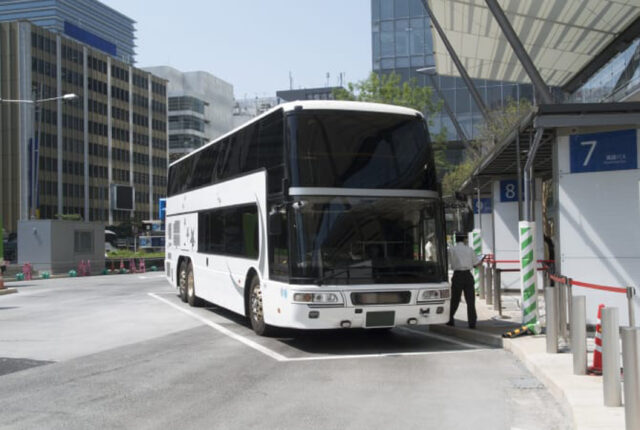 Buses in Japan
Buses in Japan
Buses
Bus services are available throughout Japan, and can often be a very convenient alternative to trains—especially when traveling in more local areas.
While journeys generally take longer, and weather and traffic can cause significant delays, fares tend to be cheaper and offer more options to travel overnight, saving the cost of a night’s accommodation. If you are traveling locally or from city-to-city, make sure to consider the bus options when planning your Japan itinerary.
Local bus
When planning a trip to Japan, why be limited by where the trains and planes go? Local bus routes crisscross the whole country and offer you convenient access to some of the more out-of-the-way locations. Traveling in the city is very easy, as usually a flat-fare is charged. You can use your IC cards—such as the Suica card—on many buses, and most of the time you board at the front. The stop names generally flash up in English.
Outside of the main cities, some buses calculate their fares by journey traveled. In this case, you will board in the center door. Take a ticket and when you get off, match your ticket number with the fare highlighted on the screen at the front of the bus. Put the exact fare into the box next to the driver and exit from the front door. Be aware that it might not be possible to use IC cards on these services.
If you plan to do lots of traveling in the Kanto area, consider purchasing the Greater Tokyo Pass for unlimited travel on selected buses and trains. It’s only available for visitors to Japan.
Highway bus
Japan’s highway buses link cities to cities, or cities to tourist spots. They are generally less expensive than traveling by airplane or railway and run both day and night. If you are flexible with your time, these bus trips are a great option. Prices vary, based on distance and comfort. If you are traveling to and from Tokyo, the Shinjuku Expressway Bus Terminal is a hub for country-wide travel.
Highway bus information websites
Many bus companies have English sites where you can find all the relevant information and also make reservations. Research to find the most suitable routes for you.
 Bicycles in Japan
Bicycles in Japan
Whether cycling the riverside paths of Kyoto, the winding mountain roads of Wakayama or along the Setouchi Inland Sea—or elsewhere—use pedal power for a deeper Japanese experience.
Bicycle Rental
Many hotels, as well as private shops, offer rental bicycle services. Often located near train stations, bicycle rental is generally cheap and easy to register for. You may need your passport when signing up. Most shops will have maps and other useful guides that you can make use of. More modern stores may give you the option of an electrically-assisted bicycle, ideal for hilly terrain.
In the major cities of Tokyo , Yokohama and Osaka , bicycle sharing systems are gathering momentum. While relatively easy to use, some prior research is recommended to make sure you fully understand what is required.
Rules of the road
If you decide to get out and about on a bicycle, familiarize yourself with the rules of the road. Read through the Japan Traffic Safety Association traffic safety guidelines before jumping on the saddle. Bicycle accidents are common in Japan’s major cities, so ride safely and sensibly. Designated bicycle paths are rare, but efforts are being made to mark out bicycle zones on the side of main roads. While still on the actual road, the area is generally respected by motorists.
Parking Bicycles
Parking for bicycles is generally in designated areas, often in front of stations. Parking your bicycle outside of these zones leaves it susceptible to being confiscated, where you will have to pay a fine for its return. In major cities, bicycle parks are often available, but some may be for registered bicycles only—cyclists who pay a monthly parking fee. Confirm with the hotel or wherever you are renting your bicycle from about where to park.
Travel further
Japan is consistently inventing ways to encourage travel by bicycle, so keep an eye out for some special train services that offer room for you and your bike. They tend to be seasonal and local, but do some research to see if you are able to take advantage of this opportunity. Cycling makes Japan’s mountainous terrain much more easy to manage.
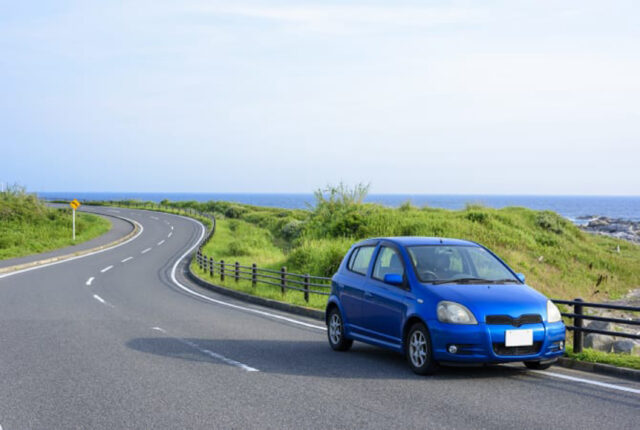 Rental Cars in Japan
Rental Cars in Japan
If you are traveling to more remote areas, a rental car may be your only option.
The islands of Hokkaido and Okinawa are much more accessible by car and the roads are generally very easy to navigate. If you plan to hire a car during your stay in Japan, make sure that you are aware of all local rules and have all the necessary documentation.
This short video of traffic rules in Japan will give you the basics, but be sure to research further into renting a car in Japan
Car Rental
You will be required to produce your International Driving Permit when renting a car in Japan.
 Going to Islands
Going to Islands
Japan might look like it’s just four big islands, but on closer inspection, you’ll find many smaller ones dotted around.
Access to these islands is made relatively easy by a good network of ferries and flights.
Okinawa and surrounding islands
The subtropical islands of Okinawa combine white sands and turquoise-blue waters with a fascinating culture—quite different from that of the Japanese mainland. Located 1,500 kilometers south of Tokyo, access is generally by plane to the main island’s capital of Naha . There are regular flights to Naha from the major mainland airports on Japan’s main carriers, All Nippon Airways and Japan Airlines, as well as some budget airlines. Flights to Ishigaki Island and Miyakojima Island are now an option.
If you want to explore further than the main island, you can access the outlying islands from the transport hub of Naha by both plane and ferry.
If you are flexible with time ferries to Naha from Kagoshima prefecture are available.
Izu Archipelago
The Izu archipelago islands are easily accessed from Tokyo’s Takeshiba Pier. Officially part of the Tokyo domain, the rural getaways are ideal if you want to experience the quieter side of the metropolis for a couple of days. The most common way to get to the islands is to travel by ship . Both slow passenger ships, and high-speed ferries are available depending on your flexibility, and propeller planes also fly there.
Ogasawara Islands
The Ogasawara islands are a cluster of 30 islands located around 1,000 kilometers from Tokyo. The World Heritage designated archipelago is ideal if you are a nature lover looking to explore the diverse and fascinating ecosystems of the islands. Access to the Ogasawara Islands is only by boat and is made as part of a fixed six-day schedule.
Other islands
Japan’s many other islands are just as easily accessed. From the natural beauty and festivals of Sado Island in Niigata Prefecture , the abandoned military forts of Tomogashima Island in Wakayama Prefecture , the smoky volcanic island of Sakurajima in Kagoshima Prefecture and many more. Make sure to fit in some island adventures during your Japanese trip.
The Japan Passengerboat Association lists a variety of routes to Japan’s isolated islands with information on fare price and travel time in English. You can check the boarding points and detailed information of courses through this site .
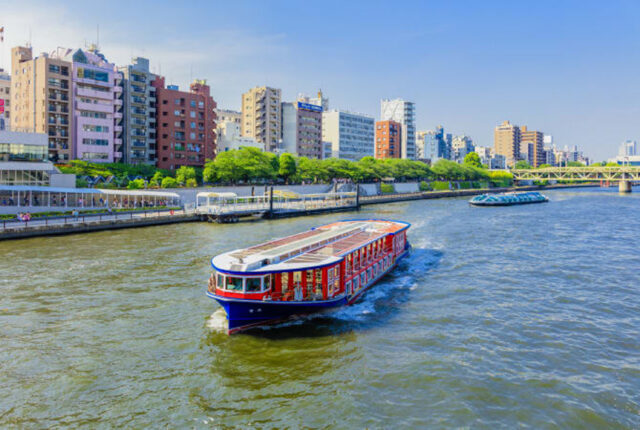 Ferry & Cruise Ships
Ferry & Cruise Ships
From short ferry crossings to overnight trips, party boats and international cruises, there are many ways to explore the seas and waterways surrounding Japan.
Ferries
Travel down the left side of the country on the Sea of Japan or up the right side from Tokyo to Hokkaido . Alternatively, head south to the bottom of Japan’s southern island of Kyushu and travel to the subtropical islands of Okinawa on the ferry from Kagoshima to Naha . Wherever your destination, Japan offers ferry options to get there.
Ferry passes allow you to discover more of Japan in an economical way. For example, explore the Osaka and Shikoku region by making use of the SUKIPPU 2000 round-trip ticket. You can get discounts on train and ferry travel on selected routes.
A number of international ferry options are available. Travel from Busan in Korea to Hakata in Fukuoka by high-speed or slow ferry. Alternatively, you can take the once-a-week ferry from Shanghai that travels to Osaka and Kobe in around three days.
Cruise Ships
If you are looking for a more luxurious time, you can board a number of cruises offering you a grander experience on the water. Day and night cruises often run in the bays of the waterside cities—such as Tokyo and Kobe—offering you a different view of the respective cities. The low-slung Yakatabune party boats that crawl through Tokyo’s waterways are a great way to see the city while eating and drinking. Cruise around the Seto Inland Sea with its lemon trees, sea shrines and whirlpools or even farther afield with a trip around the Japanese archipelago and on to destinations in Korea and China with Princess Cruises: Cruise schedules , Cruise Compete: Cruise plans , Celebrity Cruises: Cruise plans .
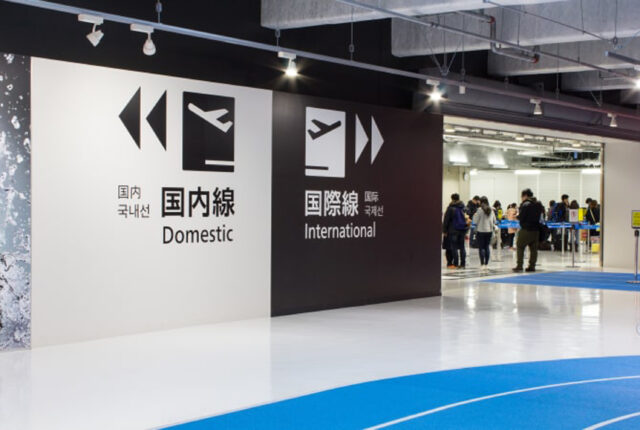 Domestic Air Travel
Domestic Air Travel
Domestic air travel makes exploring the length and breadth of Japan easy.
Domestic air travel is both cost and time efficient, and is one of the best ways to explore several destinations in Japan during your trip.
With some 90 airports serving domestic and overseas flights, air travel within Japan is very convenient. The two main airline carriers offer cheap domestic flights for visitors to the country. Look into the Visit Japan Fare/Welcome to Japan Fare by Japan Airlines (JAL) and the ANA Experience Japan Fare by All Nippon Airways (ANA) to find out more.
You are not just limited to the two major carriers, though, as a whole host of low-cost carrier airlines (LCCs) have entered the highly competitive domestic travel market. These carriers service airports throughout the country, from frozen Hokkaido in the north to subtropical Okinawa in the south. Research the flights from Jetstar Japan, Peach , Skymark Airlines , and Vanilla Air for the options most appropriate for you. As is the nature of low-cost air travel, some of the most convenient services provided by larger carriers—such as online check-in—are not always an option, and restrictions are placed upon the amount of luggage you can take without incurring extra cost. Research thoroughly before booking your tickets.
In addition to low-cost carriers, there are also a number of domestic airlines that link regional airports, such as Fuji Dream Airlines and IBEX Airlines. These are an especially convenient option for travelers looking to further explore regional areas of Japan.
While generally a reliable way to travel, flights can be delayed by typhoons and even volcanic activity—especially if traveling down to the Kagoshima area. Check the individual companies’ websites for cancellation policies.
